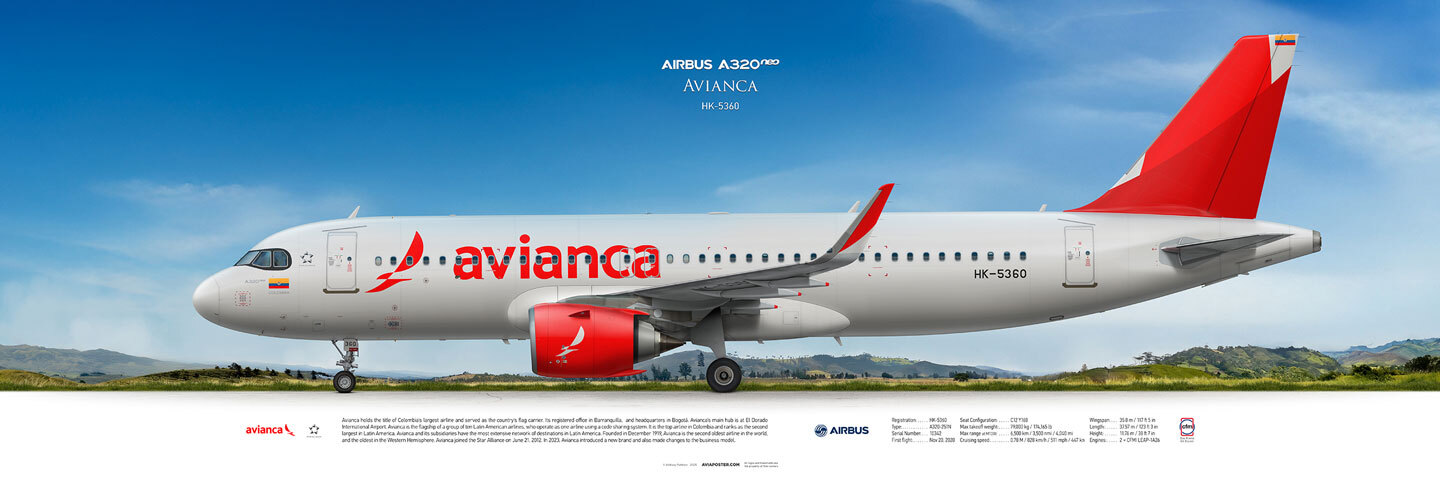The Revival of the Colombian carrier
Avianca, originally founded as SCADTA on December 5, 1919, is the second oldest airline in the world after KLM. It is Colombia’s largest airline and the country’s primary carrier. It has been a member of Star Alliance since 2012.
Celebrating its centennial, Avianca almost immediately faced significant challenges. However, serious problems didn’t only affect Colombian aviators. The year 2020 arrived, and the world changed under the pressure of pandemic restrictions. As an airline that provided services that weren’t the cheapest in Latin America, Avianca quickly lost most of its passenger traffic. In March 2020, flights were suspended. The airline filed for Chapter 11 bankruptcy, a process that doesn’t involve liquidation but allows for the reorganization of its operations. Many analysts predicted Avianca’s collapse, with some even writing the airline off the list of active carriers. Yet, defying forecasts, it persevered and, in December 2021, emerged from bankruptcy for the second time in its history.
To survive in tough conditions, Avianca restructured its business, implementing several initiatives aimed at boosting efficiency. The Colombian carrier shifted its business model from a full-service focus to a low-cost one, which didn’t always sit well with travelers accustomed to the old Avianca. In its revamped form, the airline largely prioritizes affordability and flexibility over traditional full-service amenities.
Before 2020, the company’s fleet included regional ATR aircraft, the entire Airbus 320 family, and long-haul Airbus A330s. After modernization, Avianca now operates just two types of aircraft for regular passenger flights: the A320 and A319, designed for short- and medium-haul routes, and the Boeing 787-8 Dreamliner, intended for medium- and long-haul operations. Additionally, changes were made to the Airbus A320’s capacity, with Avianca increasing the number of seats to 180.
To top it all off, in October 2023, the company underwent a rebranding and changed its name from "Avianca" to "avianca." This seemingly minor rename succinctly reflects the transformation the airline underwent over those three years and now fully aligns with its slogan, “Now the sky belongs to all of us.” At the same time, avianca unveiled its updated livery on an Airbus A320neo, deliberately minimalist to emphasize modernity. The new colors were applied to aircraft acquired after the dissolution of the fleet of Colombian low-cost carrier Viva Air Colombia, which didn’t survive the pandemic. The aircraft featured in our poster is one of them.
The previous livery and branding were designed by the London-based creative agency Lippincott, renowned for its innovative designs, including in aviation. Although the agency hasn’t publicized its involvement in the recent rebranding, the minimalism of the changes suggests that Avianca likely collaborated closely with this team to reflect a new modern vision while preserving its own legacy.
Celebrating its centennial, Avianca almost immediately faced significant challenges. However, serious problems didn’t only affect Colombian aviators. The year 2020 arrived, and the world changed under the pressure of pandemic restrictions. As an airline that provided services that weren’t the cheapest in Latin America, Avianca quickly lost most of its passenger traffic. In March 2020, flights were suspended. The airline filed for Chapter 11 bankruptcy, a process that doesn’t involve liquidation but allows for the reorganization of its operations. Many analysts predicted Avianca’s collapse, with some even writing the airline off the list of active carriers. Yet, defying forecasts, it persevered and, in December 2021, emerged from bankruptcy for the second time in its history.
To survive in tough conditions, Avianca restructured its business, implementing several initiatives aimed at boosting efficiency. The Colombian carrier shifted its business model from a full-service focus to a low-cost one, which didn’t always sit well with travelers accustomed to the old Avianca. In its revamped form, the airline largely prioritizes affordability and flexibility over traditional full-service amenities.
Before 2020, the company’s fleet included regional ATR aircraft, the entire Airbus 320 family, and long-haul Airbus A330s. After modernization, Avianca now operates just two types of aircraft for regular passenger flights: the A320 and A319, designed for short- and medium-haul routes, and the Boeing 787-8 Dreamliner, intended for medium- and long-haul operations. Additionally, changes were made to the Airbus A320’s capacity, with Avianca increasing the number of seats to 180.
To top it all off, in October 2023, the company underwent a rebranding and changed its name from "Avianca" to "avianca." This seemingly minor rename succinctly reflects the transformation the airline underwent over those three years and now fully aligns with its slogan, “Now the sky belongs to all of us.” At the same time, avianca unveiled its updated livery on an Airbus A320neo, deliberately minimalist to emphasize modernity. The new colors were applied to aircraft acquired after the dissolution of the fleet of Colombian low-cost carrier Viva Air Colombia, which didn’t survive the pandemic. The aircraft featured in our poster is one of them.
The previous livery and branding were designed by the London-based creative agency Lippincott, renowned for its innovative designs, including in aviation. Although the agency hasn’t publicized its involvement in the recent rebranding, the minimalism of the changes suggests that Avianca likely collaborated closely with this team to reflect a new modern vision while preserving its own legacy.
